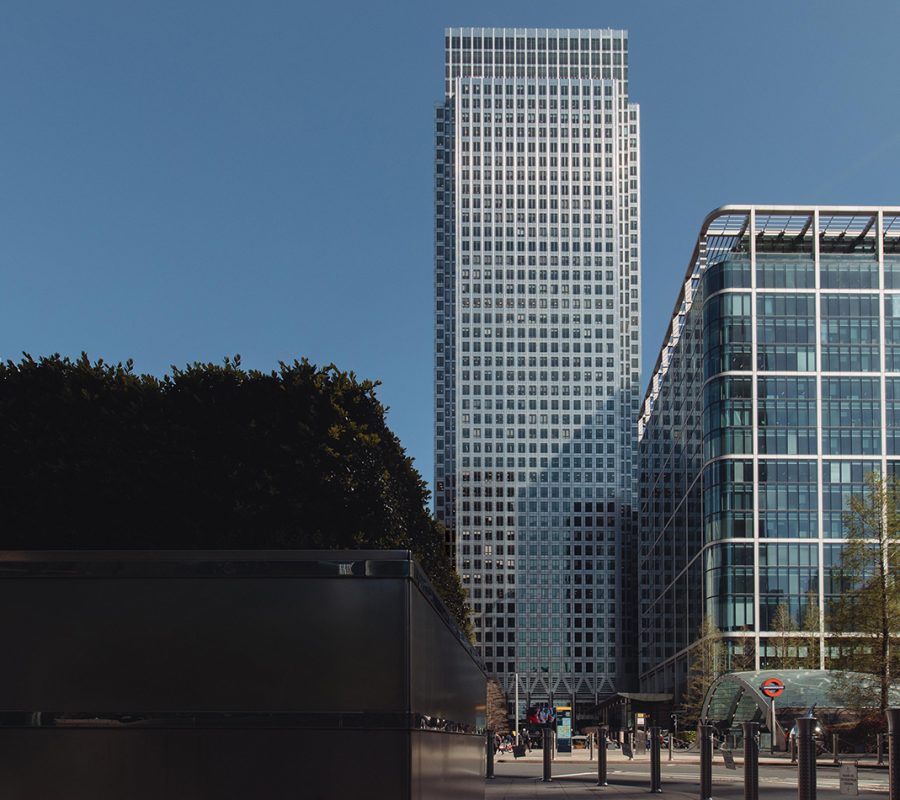Location:Docklands
Docklands Office Space
When Docklands office space is referred to, many think solely of Canary Wharf. However, the area is much larger, covering 9 square miles (22 square kilometres) of Southeast and East London.
Encompassing five boroughs, London Docklands is the area that comprises the site of the United Kingdom capital’s former docks, once known as the Port of London and the world’s largest port.
In Roman and medieval times, ships arriving in the Thames would dock at small quays, also known as ‘hithes’ in the present-day City of London or Southwark. However, these quays provided little security or protection from the elements.
The Howland Great Dock in Rotherhithe, built in 1696, was designed to address this problem and later formed the core of the Surrey Commercial Docks. It provided room for over 100 large vessels and was a major commercial success. The Docklands further expanded during the Georgian and Victorian eras.
The Georgian docks included the West India, which opened in 1802, followed by the London, the East India, the Surrey, the Regent’s Canal Dock, St Katharine and the West India South. The Victorian docks comprised the Royal Victoria Dock, which opened in 1855, followed by Millwall, Royal Albert, and the King George V Dock, which opened in 1921.
The Port of London Authority (PLA) was formed in 1909 and managed the docks and oversaw their expansion.
Bombing during World War II caused massive damage to the docks. However, they were rebuilt and prospered again during the 1950s.
However, significant changes in the shipping industry, including the adoption of containers, led to a rapid decline of the Docklands, as they could not accommodate the much larger ships that the industry had moved to use.
London’s docks were closed between 1960 and 1980, leaving around 5,000 acres of East London derelict.
At first, the redevelopment of the docks involved several organisations, including the PLA, the Greater London Council (GLC), the British Gas Corporation, five borough councils, British Rail, and the Central Electricity Generating Board, which caused significant complications.
Therefore, in 1981, the Secretary of State for the Environment, Michael Heseltine, formed a quango, the London Docklands Development Corporation (LDDC), to redevelop the area. This was wound up in 1998 when control of the Docklands area was handed back to the local authorities.
The massive regeneration program in between those dates saw the development of residential, light industrial and commercial property and the creation of a brand new central business district, Canary Wharf and its flagship building, One Canada Square, which was the tallest building in the UK when it was completed in 1991 and part of the complex named after the site’s Canadian developers.
In addition to iconic office towers, Docklands today includes prime riverside residences, hotels, yachting marinas, restaurants, bars, and several leisure amenities.
The compact London City Airport opened at the Royal Docks in 1987, and the Millennium Dome was erected on the Greenwich Peninsula in the late 1990s.
Due to the area’s scale — throughout the boroughs of Greenwich, Lewisham, Newham, Southwark, and Tower Hamlets — businesses seeking office space in London’s Docklands are offered many options, and those renting office space in the area cover a multitude of sectors.
Office buildings in Docklands range from brand-new prime office properties to characterful residential and industrial properties that are elegantly enhanced to offer unique modern working environments with 5-star amenities.
Those looking for environmentally friendly ESG-considered workspaces will find new and refurbished buildings that suit their requirements. Those seeking high-end facilities, enterprise-grade secure IT and telephony, and premium amenities such as concierge services and end-of-trip conveniences will also find these in new buildings and those with vintage and prestige.
Tenants will also find a range of choices for occupying space. There are many opportunities to rent office space in Docklands conventionally through a traditional lease and a growing number of premium, flexible office space and workspace solutions.
Also sometimes referred to as flexible workspaces, these agile workplace solutions include serviced private offices, managed office spaces and co-working desk space solutions.
These workspaces and offices are let through flexible licences with relatively low commitment in terms of agreement length relative to leased space – however, options to extend are provided.
Expanding into larger space within the same building provides agility during business growth, and there are many offices in Docklands with space for 1,000 and above desks. Equally, businesses are also provided with the option to be nimble and contract into a smaller suite if required.
Another attractor to this form of business space is the all-inclusive, one-monthly bill pricing model. The monthly rent covers overheads such as utilities, cleaning, furnishing, reception staff costs, complimentary refreshments, and others, providing excellent business and accounting efficiencies.
Private serviced offices offer lockable suites, and clients enjoy access to communal amenities such as break-out areas, hireable board rooms, cafes, and gyms. Occupiers of fitted, managed office spaces can choose to include elements such as reception areas, meeting rooms, executive offices, kitchen areas, and bathrooms in their custom office space.
Best-in-class offices in Docklands are managed sustainably to suit clients’ ESG credentials, which means that many will provide end-of-trip facilities, including EV chargers, bicycle racks, showers, and changing facilities.
In terms of transport, occupiers of office space in Docklands also have a wide range of choices.
The Docklands Light Railway (DLR) connects Docklands with the capital and London City Airport (LCY), covering Canning Town, the Isle of Dogs, Limehouse and the Royal Docks.
The Jubilee line of the London Underground service also has several stops, including Canada Water, Canary Wharf, Greenwich, Rotherhithe, Surrey Quays, and Woolwich Arsenal.
St Katharine’s Dock and Wapping are also linked via Wapping train station.


